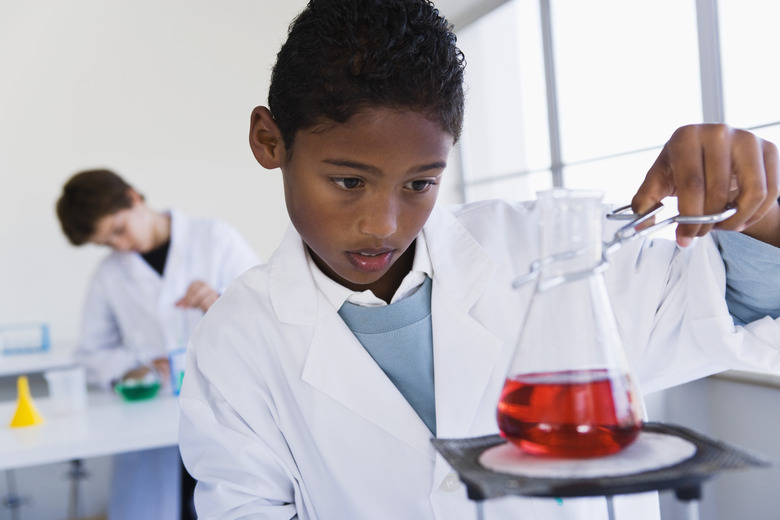5th Grade Solubility Experiment
Solubility experiments in chemistry are learning labs for most middle schoolers. Solubility means a solvent, often water, has the ability to dissolve another substance called a solute, such as sugar for instance. A solution is a mixture of molecules that are evenly distributed. A simple solution consists of a solute and a solvent.
M&M Color Dissolving
M&M Color Dissolving
For this project, have the fifth graders assemble six paper plates, a small cup and a quarter as well as a bag of M&Ms. On each plate, the students trace around a small cup to make a circle in the center of the plate. Within the middle of that circle trace a quarter. Go over the circles with a black permanent marker and put a black dot in each of the circles, as well. Cover the bottom of each plate with water. At the same time, students will place a different colored M&M in the center of each plate. They will observe for one minute then record findings on whether certain colors ran faster than others in the water.
Dissolving a Trio of Liquids
Dissolving a Trio of Liquids
Provide the students with water, corn syrup, 70 percent rubbing alcohol, vegetable oil, three clear plastic cups, three cups, three popsicle sticks. Students should wear goggles for the experiment. Label the three cups as alcohol, corn syrup and vegetable oil. Place a tablespoon of each of the liquids in the appropriately labeled cup. Fill the clear cups halfway full with tepid water. Instruct the students to slowly pour alcohol into the first cup of water and observe carefully. Next stir the contents. Ask students to look for whether the alcohol appears to dissolve in the water. Repeat the procedure with the vegetable oil and the corn syrup. Record the findings.
Sand and Sugar/Solution and Mixture
Sand and Sugar/Solution and Mixture
Gather two cups of water and a tablespoon of sugar and a tablespoon of play sand. Explain the difference between mixtures and solutions. A mixture will not have an even distribution of molecules and will have a little higher concentration on one side of the liquid than the other. A solution evenly spreads through the water. Place the tablespoon of sugar in one cup of water, and the tablespoon of sand in the other cup. Observe what happens. You should see the sand sink to the bottom of the cup while the sugar dissolves and mixes into the water evenly.
Tie Dye Solubility Experiment
Tie Dye Solubility Experiment
Direct students to bring a clean white tee-shirt class. Pass out colored markers that are permanent, plastic cup, rubber band, rubbing alcohol and a medicine dropper. Place the plastic cup inside the shirt and fasten the rubber band around it on the top of the shirt to hold it in place and section off a portion of the shirt to decorate. Place six dots of ink from a single marker in an area of a circle the size of a quarter. Add another color by dotting between the first colored dots. Slowly place 20 drops of rubbing alcohol into the center of the circle of dots using the medicine dropper. Allow the alcohol to spread out in a circular and sort of flower type design. Allow to dry for three to five minutes, then work on additional areas of the shirt as desired. Set the dye by drying in a clothes dryer for 15 minutes. While permanent marker is not dissolved in water, alcohol is a solvent for the ink allowing the colors to dissolve and spread into colorful patterns.
Cite This Article
MLA
Joy, Katlyn. "5th Grade Solubility Experiment" sciencing.com, https://www.sciencing.com/5th-grade-solubility-experiment-10068076/. 24 April 2017.
APA
Joy, Katlyn. (2017, April 24). 5th Grade Solubility Experiment. sciencing.com. Retrieved from https://www.sciencing.com/5th-grade-solubility-experiment-10068076/
Chicago
Joy, Katlyn. 5th Grade Solubility Experiment last modified March 24, 2022. https://www.sciencing.com/5th-grade-solubility-experiment-10068076/
